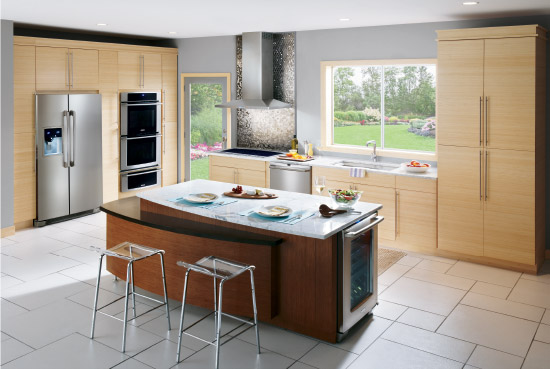Using Built-in Appliances to Enhance Design
Learning Objectives:
- Identify and recognize the characteristics of high performance built-in appliances used in residential kitchens and laundry areas.
- Determine the applicable ENERGY STAR® criteria and standards for built-in appliances.
- Determine the applicable water saving criteria and standards for built-in appliances.
- Specify and design built-in appliance installations for new construction and renovation projects.
Credits:
Designing residential kitchen and laundry areas involves a balance of function and form. Cooking, food storage, food preparation, and washing are essential functions in kitchens while clothes washing, drying, folding, and sorting are important to the function of laundry areas. Since both of these areas are used regularly and often, the design of these spaces receives a lot of well-deserved attention to be consistent with the overall design quality of the rest of the building. In the quest to achieve this needed balance between form and function, designers need to consider all of the elements that can contribute to, or detract from, both. This includes high-quality built-in appliances, which are well known for effectively providing many of the needed functions. In addition, with a proper understanding of options, they can also contribute significantly to the overall design of the spaces in which they are located.
Kitchen and Laundry Design Approach
Many sources ranging from Architectural Graphic Standards to various kitchen and bath trade associations promulgate fundamental design principles related to residential kitchen and laundry planning and design.
Kitchen Design Principles
Foremost among kitchen design principles is the notion that there are essentially three distinct work areas within a kitchen that need to function individually and collectively. At the core of each of these three areas is a fixture or appliance around which the rest of the individual work area is built. All three of the work areas are focused on one or more aspects of addressing food such as receiving, storage, preparation, cleaning, cooking, or serving. And all require some additional storage space in the form of cupboards, shelves, or other means to accommodate items related to each work area such as pots, pans, dishes, utensils, small appliances, etc.
 |
A well-designed residential kitchen benefits from the enhanced functionality and integrated forms afforded by built-in appliances. Photo courtesy of Electrolux |









